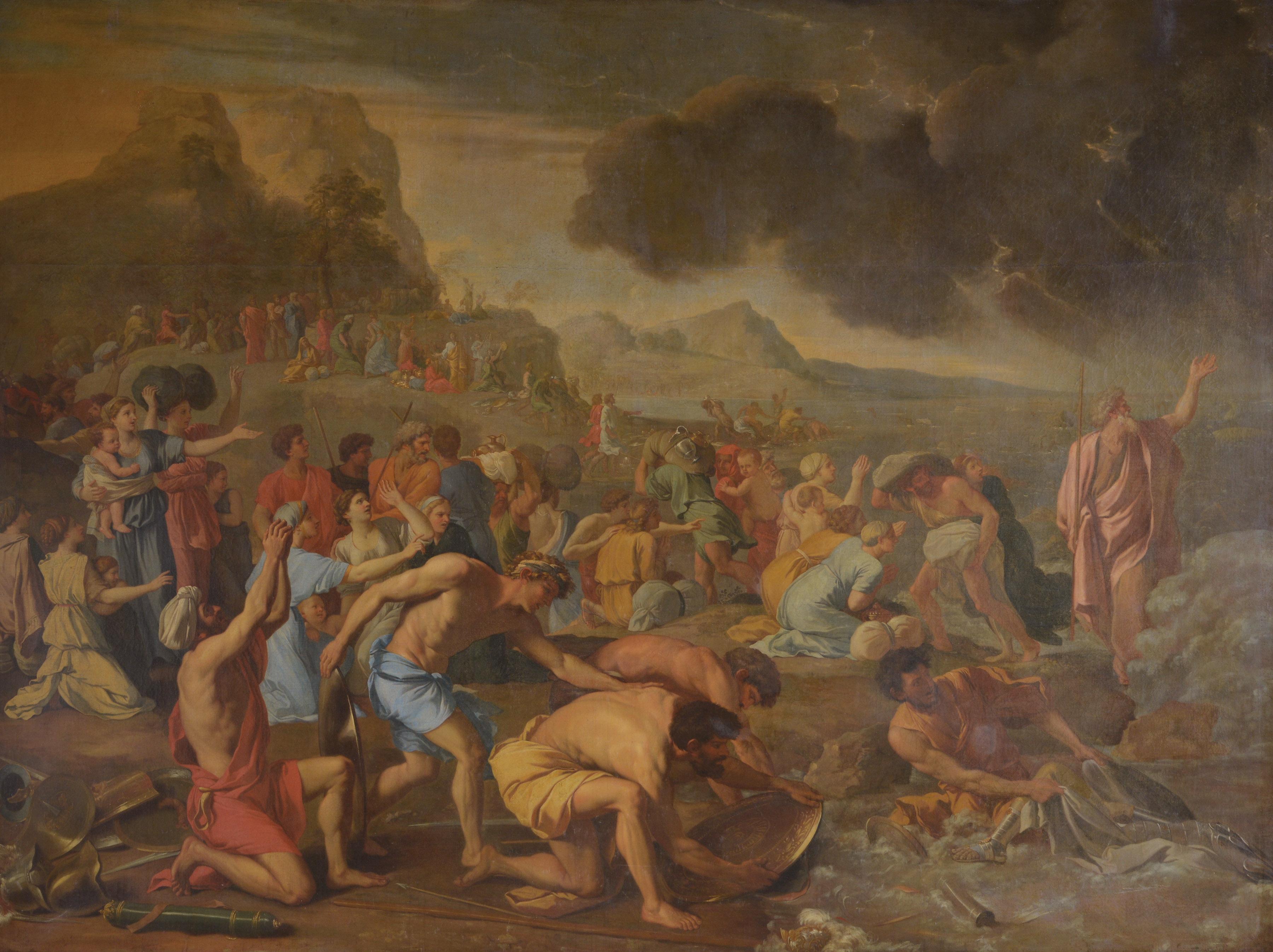
ALAMEDA, Calif. – Crossing the Red Sea, a painting that is considered important to art history, will re-emerge in the marketplace when it will be offered in Michaan’s auction Dec. 11.
Crossing the Red Sea has traveled an unexpected, modern day path, offering yet another story beyond its depicted biblical one. Charles Le Brun (1619-1690), one of France’s most influential painters of the latter 17th century, was a colleague of Nicolas Poussin (1594-1665), a leading painter of the classical French Baroque style. Le Brun was strongly influenced by Poussin’s artistic theories, which undoubtedly played a part in Le Brun replicating Poussin’s The Crossing of the Red Sea in the 1680s. Hence, Le Brun’s Crossing the Red Sea was born, copying the original image depicting chapters 26 to 31 of the Old Testament book of Exodus XIV. His homage to the original work by Poussin came to unlock multiple mysteries surrounding it; mysteries created by the alterations The Crossing of the Red Sea had experienced.
The Crossing of the Red Sea is regarded as one of Poussin’s finest works. Completed in 1634, the painting of the apocalyptic biblical scene was commissioned in 1632 for Amedeo dal Pozzo, marchese di Voghera, the elder cousin of Poussin’s most influential Roman patron and supporter, Cassiano dal Pozzo. This monumental work is thoroughly documented, as can be supported by its immense bibliography. From as far back as 1633-34, it was displayed at the National Gallery in London and as recent as 2011, the painting was recognized as one of the greatest treasures of the National Gallery of Victoria in Melbourne. The Crossing of the Red Sea stands as a blue-chip example of 17th century figurative and landscape painting.
However, the cleaning and retouching the painting experienced over the years left its original state somewhat unknown, that is until Le Brun’s Crossing the Red Sea re-emerged.
Crossing the Red Sea had not been on record since 1773, when it sold at auction in England. Since that sale, it was presumed either lost or destroyed. The painting resurfaced most recently in 2009, when the Iris and B. Gerald Cantor Center for Visual Arts at Stanford University contacted the National Gallery of Victoria in regard to research of the piece. The lost replica had found its way to the university as it was on loan from a private San Francisco collection where it had resided since the 1960s.
Since Crossing the Red Sea had resurfaced, it now came to serve as a key player in solving the mysteries surrounding Poussin’s work. Le Brun’s replica remained substantially better preserved than Poussin’s original, therefore everything from tonal values, reconstruction of damaged forms, expressed effects of sunlight and painted facial features became more clearly understood in Poussin’s work.
Crossing the Red Sea will be offered for the first time since its research release in Michaan’s Dec. 11 auction at an estimate of $500,000-$700,000.
For further information about Crossing the Red Sea as well as Michaan’s December auction call 510-227-2519 or e-mail kyrah@michaans.com.



